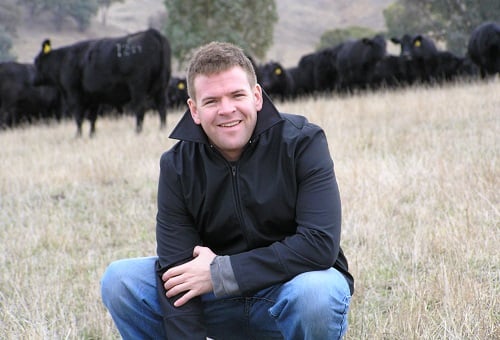

A senior insurance figure is urging the government to provide more extensive subsidies to livestock farmers, saying many remain drastically exposed to uninsured stock loss as a result of drought or flood.
“The government has previously provided rebates on insurance for farmers, including for multi-peril crop and farm pack,” says Brett O’Brien (pictured), managing director of risk management firm, OBA Consulting.
“I am calling on the government to extend that, and provide the same sort of relief for drought and flood coverage, specifically in relation to livestock.”
Currently, coverage for livestock lost as a result of flood or drought is virtually non-existent in the Australian market, leaving the vast majority of livestock farmers exposed.
“I’d say more than 99% of Australia’s cattle are not insured for flood or drought,” says O’Brien. “For decades, Australian farmers have insured their stock against either localised or widespread bushfires – it is time we did the same for drought and flood.”
As a fourth-generation farmer, O’Brien has a wealth of agricultural experience – however, he’s also spent over 20 years in the insurance space, working within a variety of disciplines including underwriting, broking and claims management, so he’s well placed to offer insight into the issue.
He claims the only way to close this gap in coverage is for the government, agricultural, and insurance sectors to come together to find a viable solution – through new products and meaningful subsidies.
“If we were to present the farmer with the premium that the insurer needs to make the product sustainable, which of course it needs to be, it’s never going to be palatable – but I firmly believe that’s where the government subsidy comes into it,” says O’Brien
“In my opinion, the best way to make this an attractive proposition to farmers, insurers and the government, would be to introduce a product with rebates that mirror multi-peril crop insurance – as a starting point.”
O’Brien’s comments are particularly timely, coming just weeks after half a million cattle – almost all of which were uninsured – were killed in floods across Queensland.
“Just 50,000 of the 500,000 cattle lost had a book value of $50 million so obviously the local insurer and reinsurer would be exposed to heavy losses if anyone were to enter the market,” admits O’Brien. “That’s why I absolutely believe the product would require subsidy.”
Of course, a common argument used to discredit insurance subsidies is the belief that offering rebates discourages risk mitigation by farmers – however, O’Brien is quick to dispel such a suggestion.
“Most of the leading rural providers are doing a lot more in the risk management space than they previously were, and you have companies working a lot more closely with farmers on their risk mitigation,” he says. “I think there’d be very little to back up the claim that subsidies decrease risk mitigation and I think we’re talking about an issue which is so problematic, arguments like that are probably more cynical than evidence-based.”
Worryingly, while the issue is already leaving thousands of farmers with a high level of exposure, O’Brien warns that it’s only set to get worse due to increasing climate volatility.
“Due to climatic conditions the world over, what used to be considered a 20-year event is now more like a three-to-five-year event,” says O’Brien.
In fact, when O’Brien was the national insurance manager for the Red Cross, the organisation had to contend with two major events in the same year.
“In 2009 alone, we suffered two so-called 20-year events and these large-scale events are becoming more and more frequent,” says O’Brien. “This is something we have to be talking about now.”
